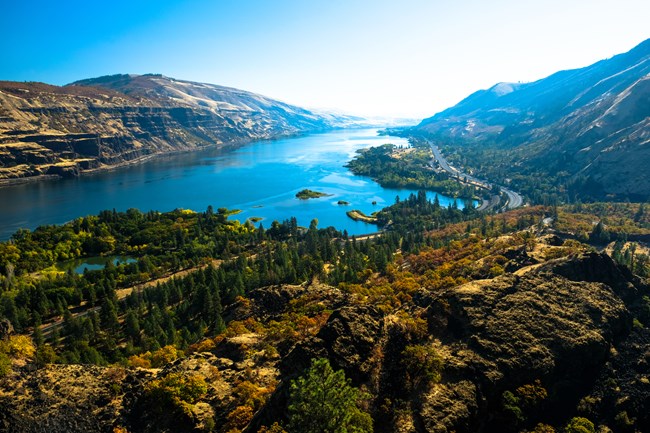Last updated: June 4, 2021
Article
Naming the Columbia River

NPS/K. Schlawin
We’d like to tell you a captivating story filled with mystery and intrigue – but we can’t. The story is straightforward and it began on May 12, 1792, when American captain Robert Gray’s ship crossed the western river’s treacherous bar. Gray would become the first known explorer of European descent to enter the river. His fur trading mission was financed by Boston merchants who outfitted him with a private vessel named “Columbia Rediviva.” So he named the great river after the ship on May 18.
What was this mighty river’s name before 1792? Well, the Chinook tribe who live near the lower Columbia, call it “Wimahl” (or “Wimal”). It’s the “Nch’i-Wàna” (or “Nchi wana”) to the Sahaptin (Ichishkíin Sɨ́nwit)-speaking peoples of the river’s middle course in present-day Washington. And the river is known as “swah'netk'qhu” by the Sinixt people, who live in the area of the Arrow Lakes in the river's upper reaches in Canada. All three terms essentially mean "the big river.”
Spanish maps of the late 1770s, based on the sighting of Bruno de Heceta in 1775, labeled it “Río de San Roque” (The Saint Roch River).
And another map created by American captain Jonathan Carver simply titled it the “River of the West.”
Even Thomas Jefferson didn’t know exactly what to call the majestic river that he believed was a part of the passage to the Pacific Ocean. In a letter to explorer Andre Michaux on January 23, 1793, Jefferson wrote, “It would seem by the latest maps as if a river called Oregan interlocked with the Missouri.” Obviously, word of Gray’s name had not yet traveled back to the United States.
